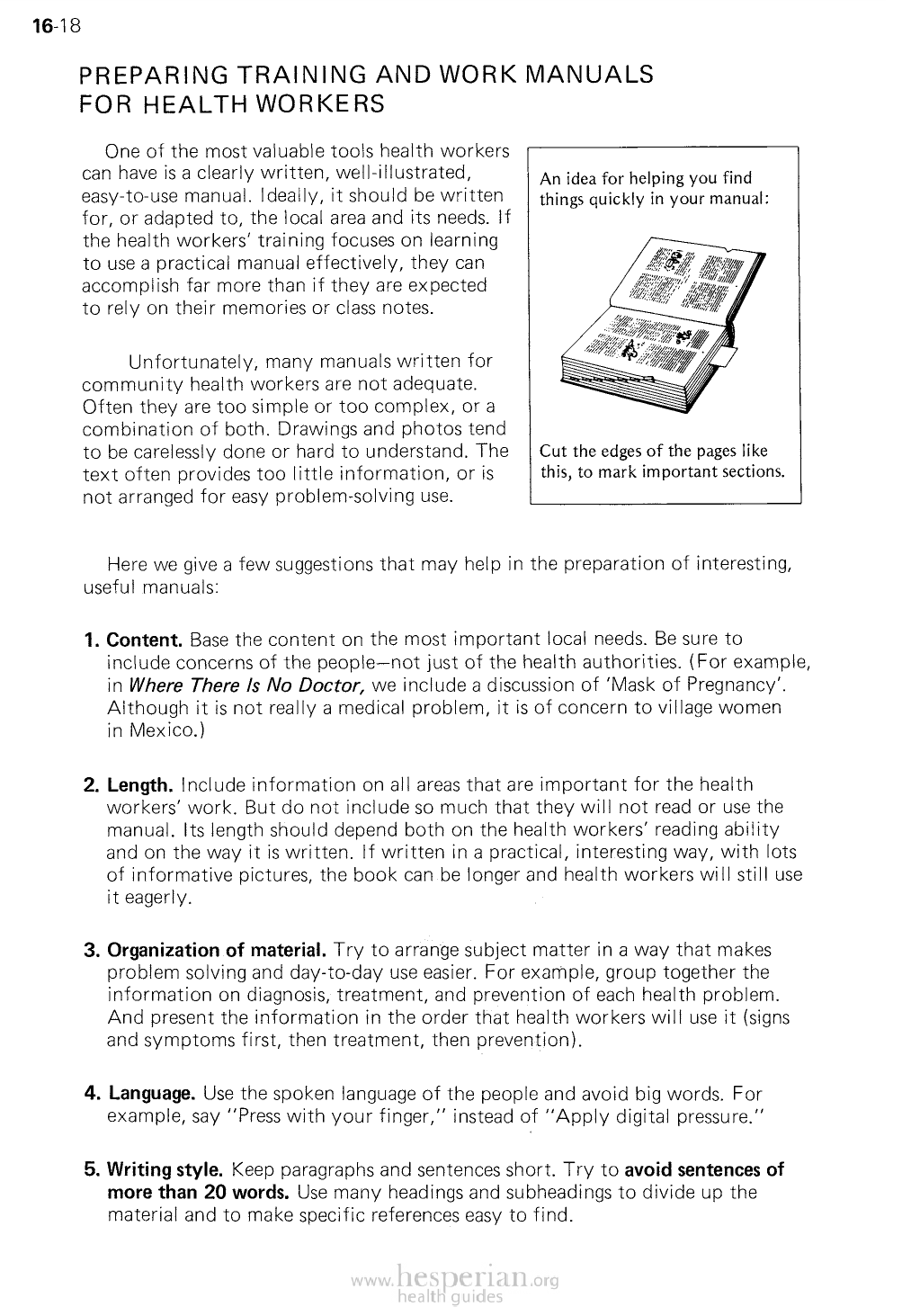
16-18
PREPARING TRAINING AND WORK MANUALS FOR HEALTH
WORKERS
One of the most valuable tools health workers
can have is a clearly written, well-illustrated, easy-
to-use manual. Ideally, it should be written for,
or adapted to, the local area and its needs. If the
health workers’ training focuses on learning to use
a practical manual effectively, they can accomplish
far more than if they are expected to rely on their
memories or class notes.
An idea for helping you find
things quickly in your manua
Unfortunately, many manuals written for
community health workers are not adequate.
Often they are too simple or too complex, or a
combination of both. Drawings and photos tend
to be carelessly done or hard to understand. The
text often provides too little information, or is not
arranged for easy problem-solving use.
Cut the edges of the pages like
this, to mark important sections.
Here we give a lew suggestions that may help in the preparation of interesting,
useful manuals:
1. Content. Base the content on the most important local needs. Be sure to
include concerns of the people—not just of the health authorities. (For example,
in Where There Is No Doctor, we include a discussion of ‘Mask of Pregnancy’.
Although it is not really a medical problem, it is of concern to village women in
Mexico.)
2. Length. Include information on all areas that are important for the health
workers’ work. But do not include so much that they will not read or use the
manual. Its length should depend both on the health workers’ reading ability
and on the way it is written. If written in a practical, interesting way, with lots of
informative pictures, the book can be longer and health workers will still use it
eagerly.
3. Organization of material. Try 10 arrange subject matter in a way that makes
problem solving and day-to-day use easier. For example, group together the
information on diagnosis, treatment, and prevention of each health problem. And
present the information in the order that health workers will use it (signs and
symptoms first, then treatment, then prevention).
4. Language. Use the spoken language of the people and avoid big words. For
example, say “Press with your finger,” instead of “Apply digital pressure.”
5. Writing style. Keep paragraphs and sentences short. Try to avoid sentences
of more than 20 words. Use many headings and subheadings to divide up the
material and to make specific references easy to find.